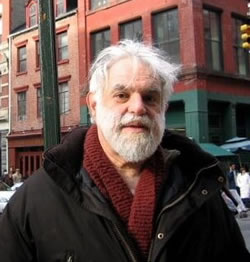COMMENTARY
An Elite Liberal University
By Leonard Quart
 These are difficult times for American universities. Despite large tuition increases, resulting in students’ staggering under debt, some colleges continue to face increasing expenses that they don’t have the revenue to cover for much longer. One-third of all colleges and universities in the United States confront financial situations significantly weaker than before the recession. In fact, Moody’s Investor Service states that the 2013 outlook for the higher education sector, including even elite research universities, is a negative one.
These are difficult times for American universities. Despite large tuition increases, resulting in students’ staggering under debt, some colleges continue to face increasing expenses that they don’t have the revenue to cover for much longer. One-third of all colleges and universities in the United States confront financial situations significantly weaker than before the recession. In fact, Moody’s Investor Service states that the 2013 outlook for the higher education sector, including even elite research universities, is a negative one.
For public universities, the big challenge is that the States are getting out of the business of higher education. In 1987, the States kicked in about three quarters of what public colleges spent on education. Today, they contribute to about half. The rest has to come from tuition, and the state colleges are raising tuition and cutting spending to deal with the problem. The cuts have hit students who come from lower and middle-income families, and also resulted in staff layoffs. It’s all a part of balancing state budgets (in response to the recession) on the backs of those who are most dependent on social spending.
Recently, the great documentarian Frederick Wiseman, the director of such films as High School, Welfare, Public Housing turned his camera on the great University of California at Berkeley. At Berkeley, like most of Wiseman’s films, is an exploration of the structure of an institution, often one under social strain—as well as, in his words, “a look at a wide variety of human behavior.” At the time of filming, the university was enduring a profound economic crisis resulting from severe cutbacks in state-government funding, and was now massively dependent on non-public funds.
Wiseman’s vérité film conveys the flow of daily life on this vast, green, beautifully maintained university. He does not employ a narrator’s voice-over, so the audience is not made aware of the camera’s constant presence. Using this fly-on-the-wall style, Wiseman focuses on classrooms, administrative meetings, public lectures, a PhD student working on bionic legs for disabled soldiers, theatrical performances, marching bands, and even the cleaning staff at work.
Berkeley is a liberal, elite public university, arguably on a par with Harvard, Columbia, Stanford, and Yale, and other bastions of talent and privilege, which it sees as its competition. Wiseman was given almost total access to the university, and the four-hour epic portrait he constructs—essentially a paean to this complex intellectual cornucopia of a university—is one that any Berkeley administrator would exult in.
In At Berkeley, Wiseman also moves from seminar to lecture hall, watching classes taught by professors who have mastery of their material, and know how to question and provoke responses from their students. The university’s goal is education committed to rational argumentation, passion, knowledge and discernment. It’s what I spent a lifetime in the classroom trying to achieve. In the main, my undergraduate students at my CUNY branch were less articulate, prepared, and responsive than Berkeley’s. But there were moments when it all came together—and students would suddenly understand the more subtle meanings suggested by a film’s images or a novel’s metaphors—and, in general, grasp more of the complexity of the world. It’s what an elite, richly textured Berkeley, and a less privileged, sparer CUNY do at their best, challenge students to realize as much of their intellectual potential as possible. #
Leonard Quart is a Professor Emeritus of Cinema Studies at the College of Staten Island and at the CUNY Graduate Center.
